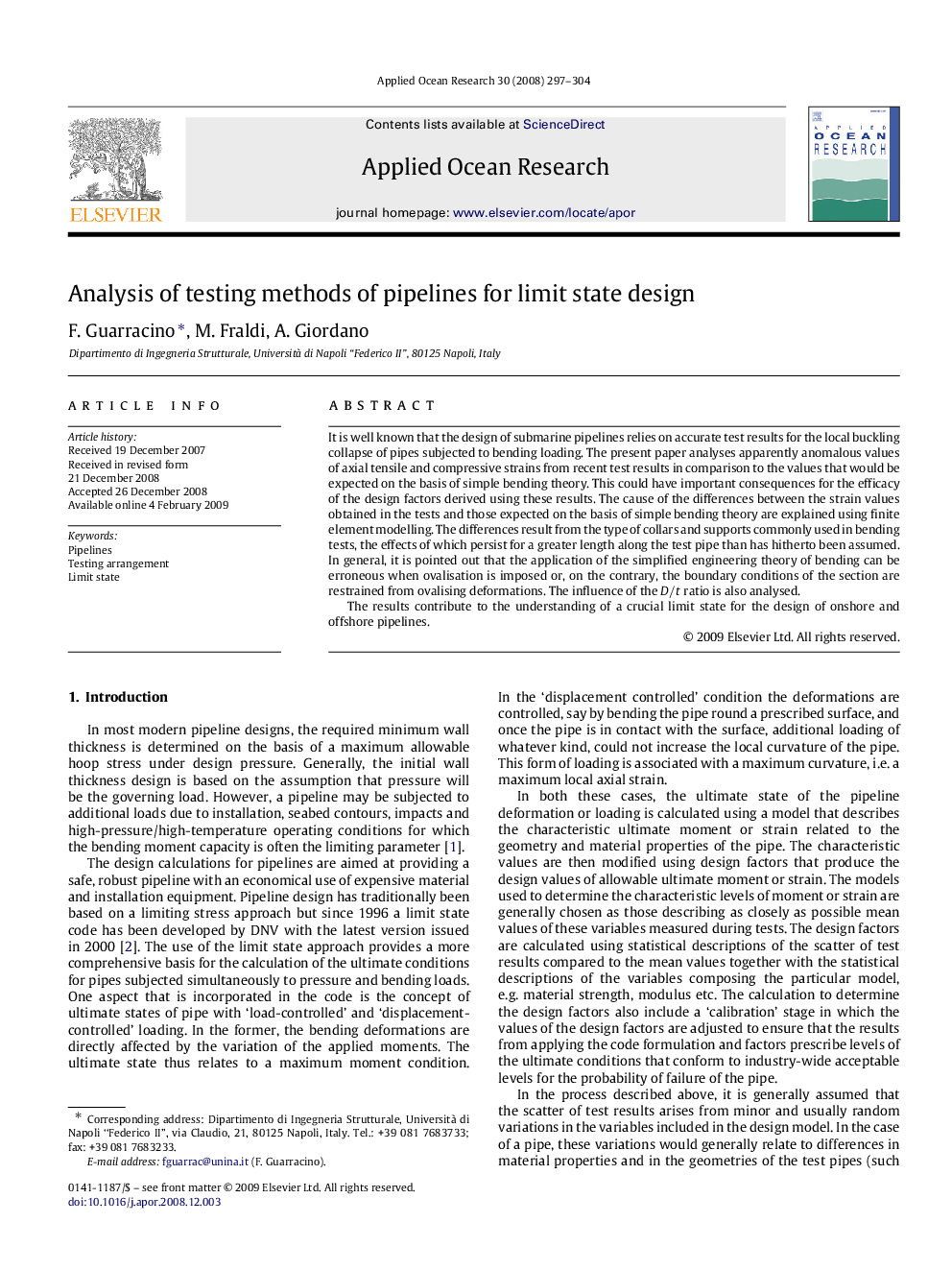| Article ID | Journal | Published Year | Pages | File Type |
|---|---|---|---|---|
| 1720384 | Applied Ocean Research | 2008 | 8 Pages |
It is well known that the design of submarine pipelines relies on accurate test results for the local buckling collapse of pipes subjected to bending loading. The present paper analyses apparently anomalous values of axial tensile and compressive strains from recent test results in comparison to the values that would be expected on the basis of simple bending theory. This could have important consequences for the efficacy of the design factors derived using these results. The cause of the differences between the strain values obtained in the tests and those expected on the basis of simple bending theory are explained using finite element modelling. The differences result from the type of collars and supports commonly used in bending tests, the effects of which persist for a greater length along the test pipe than has hitherto been assumed. In general, it is pointed out that the application of the simplified engineering theory of bending can be erroneous when ovalisation is imposed or, on the contrary, the boundary conditions of the section are restrained from ovalising deformations. The influence of the D/tD/t ratio is also analysed.The results contribute to the understanding of a crucial limit state for the design of onshore and offshore pipelines.
